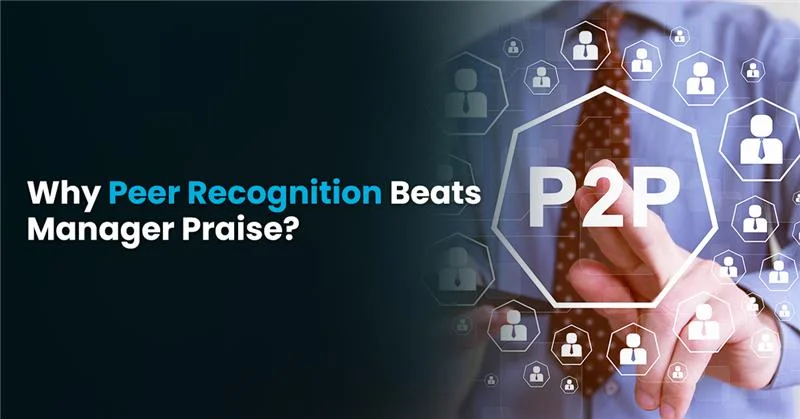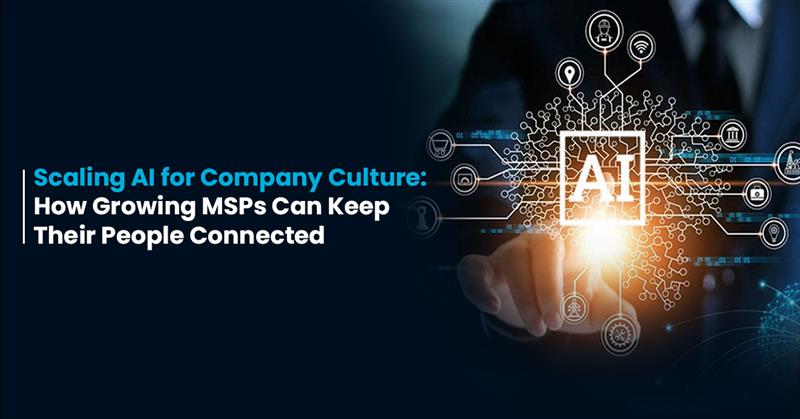Most companies assume recognition only works when it comes from the top. They’re wrong. Peer to peer recognition is what keeps employees engaged and prevents them from quietly updating their resumes.
66% of employees would quit their job if they didn’t feel appreciated. The problem? That appreciation isn’t coming from managers alone. While your boss holds quarterly reviews, your teammates are the ones watching you grind through tight deadlines, handle difficult clients, and solve problems in real time.
Peer to peer recognition isn’t a nice addition to employee recognition programs. It’s the foundation of workplace cultures where people want to stay. Here’s why recognition from coworkers matters more than praise from the boss.
What is Peer to Peer Recognition?
Peer to peer recognition is when employees acknowledge each other’s contributions, skills, and wins without waiting for a manager to do it. It’s coworkers appreciating coworkers; no hierarchy required.
Understanding Peer Recognition in the Workplace
Think about the last time you crushed a project deadline. Who noticed first? Probably not your manager who was in back-to-back meetings. It was likely the teammate sitting next to you who saw you grinding through the details.
Traditional recognition flows from the top down. Your boss notices something, writes it in a review, and maybe mentions it during a team meeting. Peer recognition in the workplace flips that model. It’s lateral, immediate, and comes from the people who witnessed the effort.
Employees want to be recognized by their peers just as much, if not more, than by managers. German utility company E.On ran a simple thank-you note program where employees could send appreciation cards to each other. The result? Employees felt more connected to their work and teammates than ever before.
How Employee Recognition Programs Have Evolved
Remember when “employee of the month” meant a parking spot and a plaque? Those days are fading fast.
Modern employee recognition programs democratize appreciation. Gen Z and Millennials especially prefer recognition that feels authentic and immediate; not something that shows up once a year in a performance review. They want workplace culture and recognition that happens in real-time, from the people they work with daily.
Recognition software for teams has made this shift possible. Digital platforms let anyone give kudos instantly, creating a culture where appreciation flows naturally instead of being bottled up until the next 1-on-1.
Why Peer to Peer Recognition Matters More Than Manager Praise
Manager recognition has its place. But if you’re only relying on top-down praise, you’re leaving serious value on the table.
The Authenticity Factor in Workplace Recognition
Your peers see the work that never makes it into a status update. They see you jump on a last-minute bug fix, handle a difficult client call, or mentor a junior teammate. Managers miss most of this because they’re juggling ten other priorities.
That’s why peer feedback lands differently. When a coworker says “you nailed it,” they mean it, because they were right there watching it happen.
Employees say peer feedback has the most impact on their feelings of acknowledgment. It’s not just about frequency. It’s about credibility. Recognition from someone who understands the day-to-day challenges feels earned, not obligatory.
How Peer-to-Peer Recognition Transforms Employee Engagement
Employee engagement strategies often overcomplicate things. Want people to care about their work? Make them feel seen by the people they work alongside.
Employees are more likely to put in extra effort when their work gets noticed, and peer recognition creates psychological safety. When teammates appreciate each other openly, trust builds. Teams stop competing for the manager’s attention and start collaborating better.
Companies with strong peer recognition systems see teams that are more likely to develop constructive cultures. Why? Because appreciation becomes everyone’s responsibility, not just the boss’s.
Benefits of Peer-to-Peer Recognition on Company Performance
Let’s talk numbers, because peer to peer recognition isn’t just warm and fuzzy; it directly impacts your bottom line.
Organizations with recognition programs that include peer-to-peer elements see lower voluntary turnover rates; people don’t leave when they feel valued by their teammates. They also experience boosts in productivity and engagement; motivated employees simply work better.
Happy teams create happy customers, and people who receive high-quality recognition are far less likely to leave their jobs. A large company can save millions annually just by reducing turnover through effective recognition. That’s not a rounding error; that’s real money that goes straight to your growth initiatives instead of recruiting and onboarding replacements.
Employee Engagement Strategies Through Peer Recognition
Engagement isn’t about pizza parties or ping-pong tables. It’s about making people feel like they matter consistently.
Building a Recognition-Rich Workplace Culture
Workplace culture and recognition are inseparable. When peer to peer recognition becomes standard practice, something shifts. Departments that rarely interact start celebrating each other’s wins. Silos break down because people are paying attention to work beyond their immediate scope.
This creates shared accountability and a sense of collective achievement. Instead of individual contributors fighting for spotlight, teams start rooting for each other. That’s the kind of culture where people stick around.
Motivating Employees Through Recognition Software for Teams
Technology makes peer recognition scalable. Recognition software for teams removes friction; employees don’t need to schedule meetings or wait for the right moment. They can send kudos immediately, publicly or privately, with just a few clicks.
For hybrid and remote teams, these platforms are essential. When your coworkers are scattered across time zones, a digital kudos board creates visibility. Everyone sees appreciation happening in real-time, which reinforces that recognition is valued and expected.
The best platforms make it stupidly easy to give recognition. The fewer clicks between “I want to appreciate someone” and “done,” the more often it happens.
How to Implement Effective Peer Recognition Programs
Want to build a culture where peer to peer recognition thrives? Here’s how to actually do it.
Creating Framework for Peer Recognition in the Workplace
Don’t overcomplicate this. Set clear guidelines but keep them simple:
- Define what meaningful recognition looks like (specific, timely, tied to values)
- Connect recognition to company values so it reinforces what matters
- Make it voluntary; forced recognition feels hollow
- Celebrate effort and impact, not just outcomes
The best peer recognition programs give people permission to appreciate each other without bureaucracy getting in the way.
Best Practices for Recognition Software for Teams
Choose platforms that prioritize usability. If your tool requires five clicks and three form fields, people won’t use it. Look for:
- One-click kudos options so recognition happens in the moment
- Public and private channels for different recognition styles
- Integration with existing tools like Slack or Teams
- Analytics to track participation and ensure everyone gets recognized
Some employees love public shout-outs. Others prefer quiet acknowledgment. Give them both options and watch participation soar.
Motivating Employees Through Consistent Recognition
Frequency beats grandeur. Weekly recognition from peers beats an annual award ceremony every time.
Encourage specificity. “Great job!” is nice, but “You saved us on that client call by catching the pricing error before it went out; thank you!” sticks with people. Be clear about what the person did, why it mattered, and how it helped.
Leadership must model this behavior. When executives publicly recognize each other and their teams, it signals that peer to peer recognition isn’t just tolerated: it’s expected and celebrated.
Transform Your Workplace Culture with Team GPS
The challenges of building authentic peer to peer recognition are real. Fragmented teams, surface-level connections, and constant pressure make it hard to create workplaces where recognition flows naturally.
You can implement all the recognition software for teams you want, but if your people don’t genuinely know each other, appreciation rings hollow.
Team GPS brings your entire team together for immersive experiences that build the foundation for lasting recognition culture. When employees connect face-to-face, share real challenges and celebrate wins together, peer to peer recognition becomes second nature.
You Need Team GPS to Improve your Work Culture
Build genuine relationships that make peer recognition authentic. Break down silos so cross-functional appreciation happens. Learn proven employee engagement strategies from industry experts. Experience recognition in action, not just in theory. Transform isolated teams into connected groups that lift each other up.
Register now for free Team GPS demo and give your employees genuine recognition what they are craving for. Team GPS delivers the connection that makes it real.
FAQs (Frequently asked questions)
Q: What is peer-to-peer recognition?
Peer-to-peer recognition is when employees publicly acknowledge each other’s contributions and achievements without needing manager approval, creating authentic appreciation between coworkers.
Q: What are examples of peer recognition?
Examples include digital kudos on Slack, handwritten thank-you notes, peer-nominated monthly awards, celebration boards, rotating trophies, and public shout-outs during team meetings.
Q: Why is peer recognition important?
Peer recognition is more effective financially than manager-only recognition and reduces turnover, while building trust and psychological safety within teams.
Q: How do you implement peer-to-peer recognition?
Create simple guidelines, choose an easy-to-use platform, have leadership model the behavior, keep it voluntary and authentic, track inclusivity, and celebrate both small wins and big achievements regularly.
Q: What are the benefits of peer-to-peer recognition programs?
Benefits include higher retention, increased productivity, reduced burnout, higher customer satisfaction, stronger collaboration, and company culture aligned with values.








